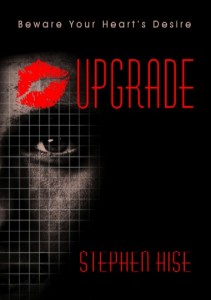 In my last post, I discussed the concepts of unconscious or subcognitive influence on the decisions people make. The hard-wired brain appears to be involved in a much wider array of skills and decision-making than science had previously thought.
In my last post, I discussed the concepts of unconscious or subcognitive influence on the decisions people make. The hard-wired brain appears to be involved in a much wider array of skills and decision-making than science had previously thought.
People can catch a ball without consciously doing the complex trigonometry required to calculate angle, arc, and rate of speed. When the person fails to make the catch, it is more likely a result of the conscious mind intruding on the process—i.e., fear of being hit by the ball. If we don’t get in our own way, our brains work all that out lightning-fast without any fancy book-learnin’.
This article discusses how Alex Pouget, associate professor of brain and cognitive sciences at the University of Rochester, has shown that people do indeed make optimal decisions—but only when their unconscious brain makes the choice.
“A lot of the early work in this field was on conscious decision making, but most of the decisions you make aren’t based on conscious reasoning,” says Pouget.
This article on Viewzone discusses how these types of unconscious decisions apply to determinations about the attractiveness of others.
“Facial recognition is a complex process. Only recently, with the need to spot criminals and terrorists, computer facial recognition programs have been developed to analyze the subtle variations of such things as the space between our eyes, the size of our noses and the proportions of our facial features. Scientists have discovered certain mathematical facial proportions that identify beautiful people.”
All this is of more than passing interest to me. This science is the underlying premise of my novel, UPGRADE. In the book, a wealthy but unattractive young man undergoes a  microprocedure which has the effect of optimizing the symmetries in his face the brain uses to determine attractiveness. The changes in his appearance are measured and registered by the subcognitive hard-wiring in the brains of others. In effect, he becomes a “10” without really looking different at all. Suffice it to say things do not go exactly as he expects. Hence, the tagline, beware your heart’s desire.
microprocedure which has the effect of optimizing the symmetries in his face the brain uses to determine attractiveness. The changes in his appearance are measured and registered by the subcognitive hard-wiring in the brains of others. In effect, he becomes a “10” without really looking different at all. Suffice it to say things do not go exactly as he expects. Hence, the tagline, beware your heart’s desire.
Conceptually this is nothing new. Photographers know the tricks lighting can play on a subject, and they deploy various filters and lighting techniques to enhance the appearance of people in portraits. This is how you can tell most of the really mean photographers work at the department of motor vehicles.
All that is really new about this is that science is catching up on explaining the phenomenon. This can be scary stuff, because we all know science does what it can and not only what it should. For instance, we know blankets can have sleeves attached, but should they? Too late. That has already happened. We’re living in a snuggy nightmare.
Still, this technology could be very useful to authors. Think about the applications for cover design. If the metric were known, the faces of people on the covers of your books could be designed to speak to the subcognitive part of customers’ brains, dramatically increasing your sales.
This is what cover art tries to do anyway. That’s why book covers generally feature attractive people. When was the last time you saw a romance cover with a pot-bellied buck-toothed hillbilly embracing some chick who has a goiter and a lazy eye? Not that there’s anything wrong with that (ahem).
Off topic, but I once took a girl on a date to the movies, and she told me I looked good in the dark. Shut up.
Beyond images though, it may also be that the subcognitive mind finds certain words more appealing. If you could place those words in your title, you may find a jump in sales. If those keywords were littered throughout your manuscript, might the reader find the book harder to put down? I think that stuff would be interesting to know.
So, I put all the titles of the best-selling books of all time into a spreadsheet to do some calculations and look for correlations. So far, all I’ve found is that the word “the” seems to be present in many of them. I’ll keep looking. Of course, my research is funded by my book sales, so that may be problematic.

So, it’s not true? No more ‘everyone is beautiful’? Crap!!
Maybe we should band together and set up a research foundation for this kind of thing. The logistics should be pretty easy — I think most of us are already nonprofit…
lol
I’m still cheesed about not getting the grant funding for my death-ray feasibility study.
Cool advice, EM, thanks. The title of my next book is going to be “The the” – it’ll be a winner for sure!
I used to call this the sub-conscious, but I like the idea of sub-cognitive even better. It explains why we decide to do one thing… and then end up doing another. Wonderful tip-of-the-iceberg stuff.
People make optimal decisions but only when they do it unconsciously? That is scariest of all of your creepy stories.
And subliminal advertising has another go-around.